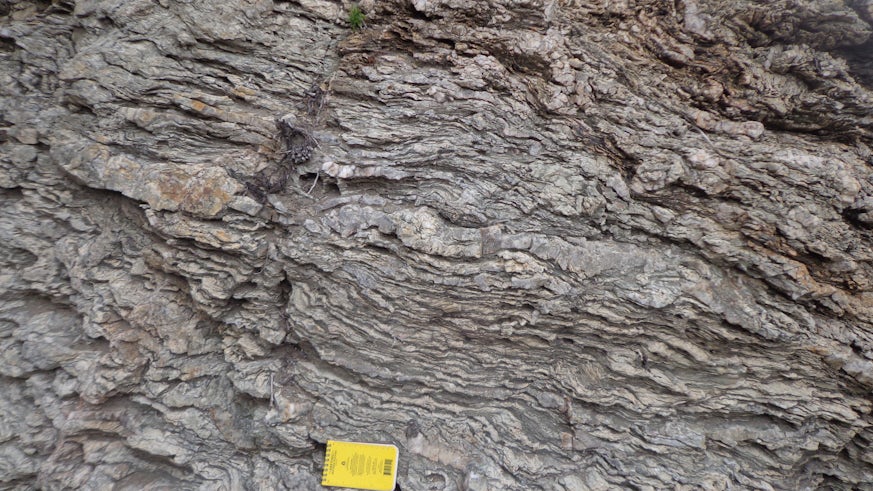Exploring the kinetics of the seismic cycle
20 June 2022

New research by the School of Earth and Environmental Sciences explores the role that quartz cementation may play in fault healing, a process thought to influence the timing, location, and energy of future earthquakes.
During an earthquake, the strength of a fault decreases dramatically and instantly. Afterwards the fault regains its strength, but the speed and mechanism of the healing process is not well understood. Recovery of pre-failure fault strength (be it partial or complete) between earthquakes is referred to as fault healing. The exact mechanisms of fault healing, as well as the magnitude of their effects and the time scales of the process, are a subject of active debate in the earthquake mechanics community.
There is consensus that both physical and chemical mechanisms likely play some role, and that the relative contribution of different mechanisms almost certainly varies with temperature, pressure, and the bulk chemistry of the system (i.e., the composition and properties of both rocks and local fluids within the fault zone) at different depths within the earthquake-producing crust.
Research by Dr Ake Fagereng of Cardiff University and Randolph T. Williams of the University of Wisconsin explores whether quartz cementation during fluid-fault interactions can facilitate fault healing.
In fault zones exhumed from near the base of the earthquake-producing crust (i.e., 10 to 15 kilometres in continental crust but deeper in subduction zones), slip-related fractures and cracks are sealed with quartz cements, formed from fluids residing within, or flowing through, the fault zone. This observation has led to the common inference that quartz cementation exerts a major control on fault healing.
Although the commonality of quartz cements and inferred strength recovery in fault zones is not disputed, the link between quartz cementation and the seismic cycle implies a specific time scale over which this process occurs. More specifically, for quartz cementation to impact the seismic cycle, a sufficient volume of quartz cements must grow between successive earthquakes. The earthquake mechanics community has argued that a variety of different mechanisms specific to fault zones may allow for extensive quartz cementation and associated healing over such short time scales, but few have been analysed in detail.
In the first critical review and theoretical analysis of these mechanisms, Fagereng and Williams review and explore a variety of processes that have been argued to facilitate such rapid cementation.
Their work concludes that it is difficult for quartz to grow fast enough to heal faults on the timescale of the earthquake cycle in many circumstances. Healing by quartz cementation, although commonly invoked, is most easily explained in very low porosity fracture systems along fault interfaces, while cementation of more extensive vein systems in fault zones requires conditions that are rarely achieved, if currently known empirical relations are correct.
The researchers call for more work on understanding whether quartz growth or alternative mechanisms can explain healing between earthquakes. Specifically, to address the lack of detailed empirical constraints on the rates of quartz precipitation and to cover additional hydrothermal synthesis experiments, examining the detailed kinetics of quartz cementation at conditions reflective of the earthquake-producing crust.
Read the full paper entitled, ‘The Role of Quartz Cementation in the Seismic Cycle: A Critical Review’ in the journal Reviews of Geophysics.